
Photo album: "Mexico, Yucatán: Chichén Itzá (2)"
Fly over a photo with the mouse to enlarge it
Click on a photo to open it in a new window
We continue our visit of Chichén Itzá with the Temple of the Warriors, the Group of Thousand Columns, the Convent and the Observatory.
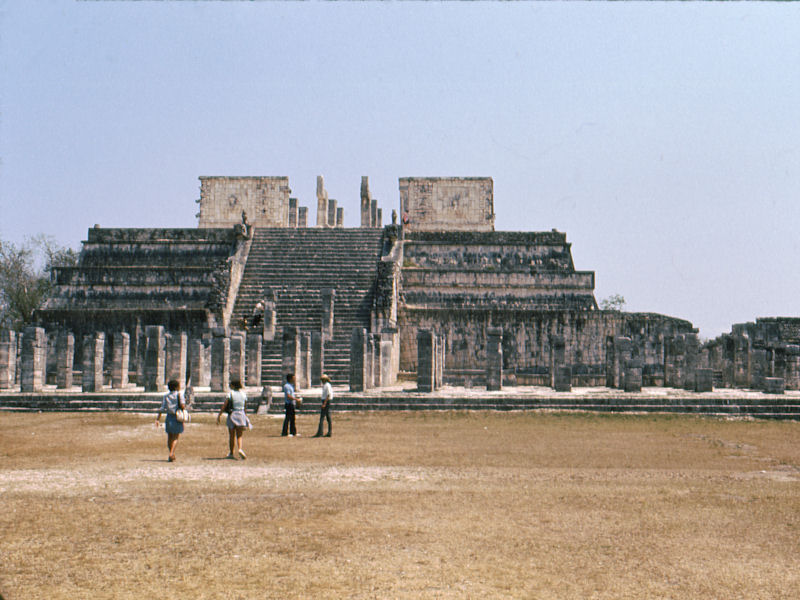 |
We are now walking towards the large access stairway to the Temple of the Warriors. |
 |
Detail of bas relief carvings of Toltec warrior on each side of a square column. |
 |
Along the south wall of the Temple of the Warriors a series of columns, called the Group of Thousand Columns, is supposed to have supported an extensive system of roofs, now disappeared. |
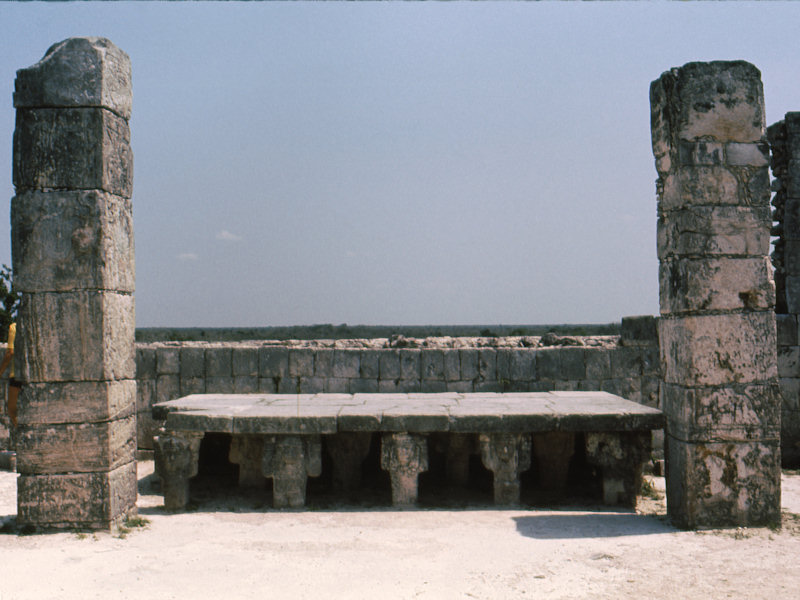 |
This stone table could have been used for sacrifices… |
 |
We are now inside the temple, in the main alley surrounded by several columns which, once, supported the roof. |
 |
At the top of the stairway, on either sides, the head of a serpent topped by a statue which, in the beginning, would have handled a banner. |
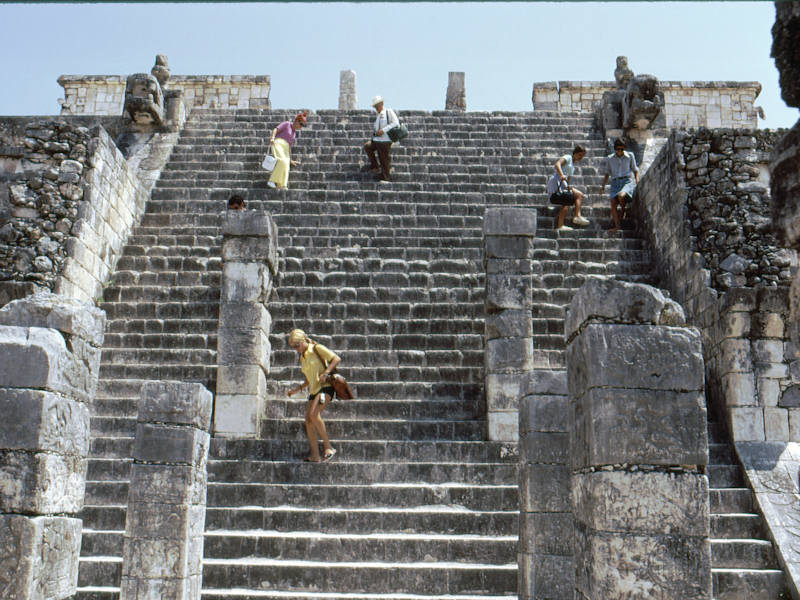 |
People are stepping down cautiously. This demonstrates a common characteristic for all the monuments we visited in Mexico: the extreme steepness of the stairways. |
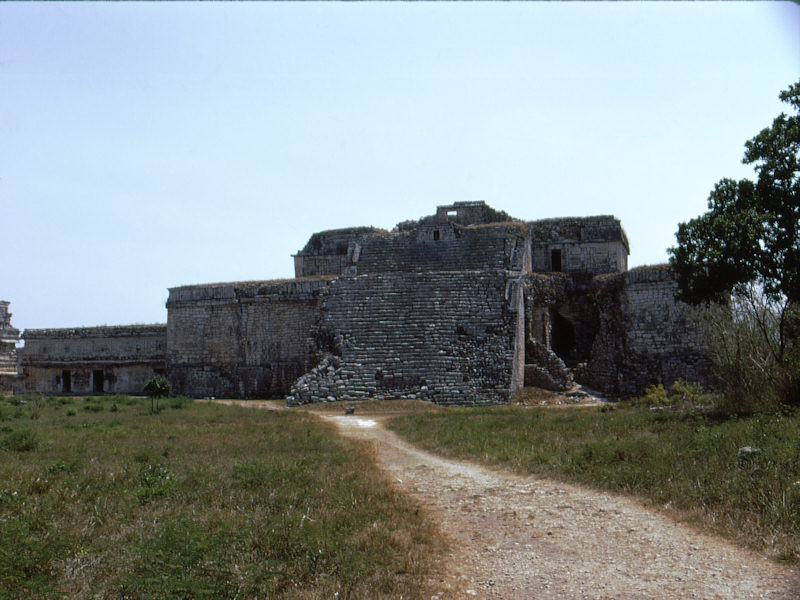 |
This building had been called the "Convent" by the former Spanish. It is a typical Mayan monument. |
 |
Near the "Convent" this small temple had naturally been called the "Church". |
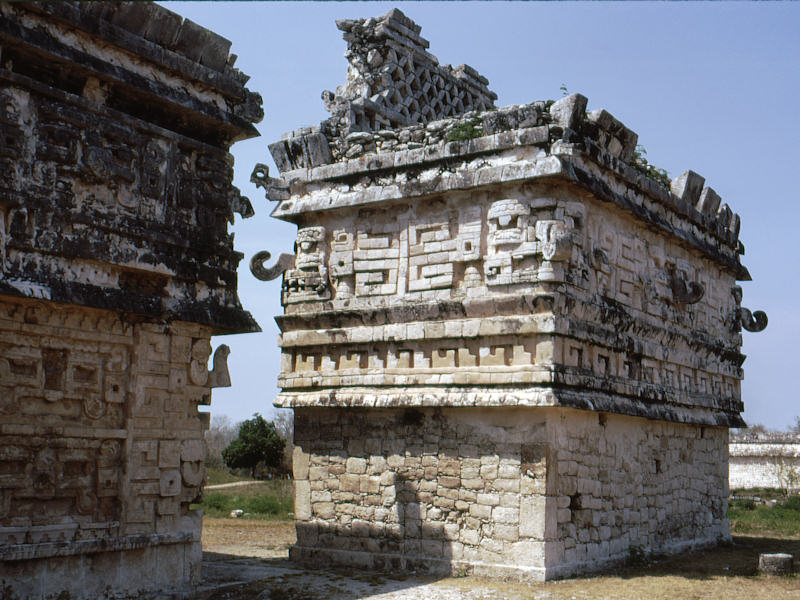 |
Another view of the "Church". Its façade is decorated with masks representing Chaac, the Mayan long-nosed god of the rain (well visible at the corners of the building). |
 |
We are now approaching the Observatory, called "el Caracol" by the Spanish, which means the "Snail", and that refers to the spiral staircase inside the building. |
 |
We have both climbed to the top of
the dome. My colleague Jacques is now beginning to step down the spiral
staircase. Here ends our visit of Chichén Itzá. |
.
.
.
.
.
.
.